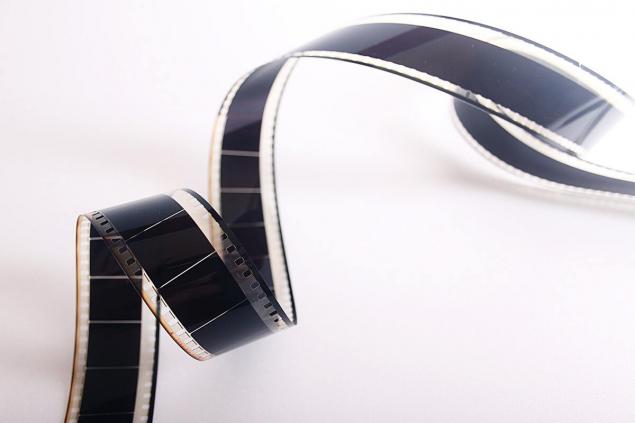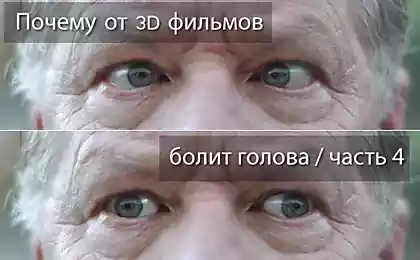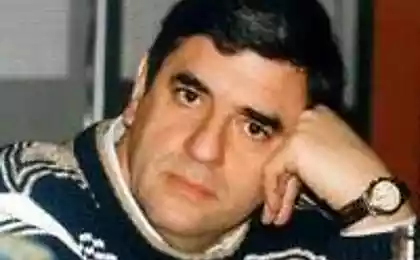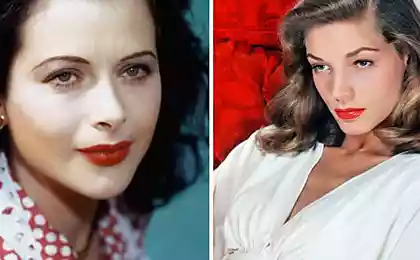504
Ukrainian cinema, which was not available to the audience in Soviet times
Ukrainian cinema in the Soviet era was not the best of times. Like Russian filmmakers, Ukrainian films have also been censored and banned. It is no secret that the reasons for this were enough. After all, everyone has long known that a huge number of paintings have not become available to the mass audience due to censorship.
Fortunately, in times of full access to data, the names of prohibited tapes again appear in the information space. And today we're gonna talk about 6 Ukrainian films that were banned in the USSR.

Peels Ukrainian cinema
Peels Entering the Sea (1965) The directorial debut of Leonid Osyki appeared in the form of a short work Entering the Sea. This picture was one of those, which later said that they were “before their time”. Since there is no dialogue in the tape, and the whole narrative is expressed in the setting of the frame and the use of colors, it is obvious that for the Soviet man of 1965 this approach was too innovative.
As a result, the painting was banned for a rather unusual reason. Namely for “existentialism” and “decrease.” Of course, the intention of the creator was not to impose the latter on the viewer. And quite the opposite, to reveal to the audience new facets of perception and thinking. However, censorship does not approve of this.

Peels " Spring for the thirsty" (1966) The second picture on the list can not be distinguished by the presence of rich dialogue. “A spring for thirsty” is one of those works that were lucky enough to “survive”. When the film was criticized and ordered to destroy all copies, the director of “Rednik...” Yuri Ilyenko managed to steal 1 copy of his creation. Thanks to this courageous act, modern viewers now have the opportunity to get acquainted with one of the best Ukrainian films.
The story centers on an elderly single man who prepares to face the inevitable. There is almost no dialogue, and the entire narrative is based on visual images. It can be said that it was a kind of parable about the eternal questions of life and its departure. Could you imagine such a thing in Soviet times? Hardly.

Peels "White Clouds" (1968) Unlike their predecessors on the list, White Clouds still reached their viewer. In a completely different way, though. The film begins with the fact that the main character receives a telegram from his father and is now forced to go to his father’s home, to a remote Ukrainian village. On the way, the hero begins to remember his childhood, which fell on the 30s, as well as his father, who at that time acted in the interests of the Soviet government.
Given the time frame and location, it’s not hard to guess exactly which topics were touched on and why the authorities didn’t want to let viewers even speculate on the topic. As a result, the picture was subjected to numerous edits and censorship, which radically changed the original purpose of its creators.
“Conscience” (1968) The painting by Vladimir Denisenko “Conscience” tells about a difficult moral choice. So, the Second World War, the Ukrainian village. A young local boy accidentally becomes responsible for the death of a German officer. After that, enemy troops come to the village and demand to give the young man. Otherwise, the whole village will suffer. And then the heroes have the most difficult choice.
The plot, where there is not a single correct solution, and ideology fades into the background, simply could not exist peacefully during the Soviet era. Accordingly, therefore, the picture was safely banned, and the then Ukrainian viewer never saw “Conscience”.

Peels "Long wires" (1971) "Long wires" Kira Muratova reached the mass audience only 16 years after the completion of filming, in 1987. It would seem that ordinary Ukrainian cinema, a story about the difficult relationship between a mother and a growing son. Family drama, nothing more. However, when all the material was filmed, the leadership of the Odessa film studio demanded Muratova to remake the picture. To which the latter refused.
As a result, the picture was put on the shelf and not released until restructuring. Fortunately, the venerable age of the picture did not prevent her in the same 87th year to receive an award at the Locarno Film Festival.
“The Missing Letter” (1972) The neighbor on the shelf of the previous film was the long-suffering picture of Boris Ivchenko “The Missing Letter”. She was also not honored in power and came to light a decade later. Before that, the story about the Cossacks was subjected to numerous edits. From music to the German Empress accent. As a result, no option was censored and simply banned.
The story itself based on the work of the same name by Nikolai Gogol is strikingly different from the original source. Events and adventures are many times more, as are expressions of cultural identity. When “The Missing Letter” was released, it instantly became the pride of Ukrainian cinema.

Ukrainian cinema may not be the most popular in the world. However, its development even in Soviet times is difficult to deny. Like other Soviet directors, they were also censored and edited. However, despite attempts to suppress dissent in the movies, it failed. And now everyone has a chance to see the paintings of Ukrainian masters of their craft.
Fortunately, in times of full access to data, the names of prohibited tapes again appear in the information space. And today we're gonna talk about 6 Ukrainian films that were banned in the USSR.

Peels Ukrainian cinema

Peels Entering the Sea (1965) The directorial debut of Leonid Osyki appeared in the form of a short work Entering the Sea. This picture was one of those, which later said that they were “before their time”. Since there is no dialogue in the tape, and the whole narrative is expressed in the setting of the frame and the use of colors, it is obvious that for the Soviet man of 1965 this approach was too innovative.
As a result, the painting was banned for a rather unusual reason. Namely for “existentialism” and “decrease.” Of course, the intention of the creator was not to impose the latter on the viewer. And quite the opposite, to reveal to the audience new facets of perception and thinking. However, censorship does not approve of this.

Peels " Spring for the thirsty" (1966) The second picture on the list can not be distinguished by the presence of rich dialogue. “A spring for thirsty” is one of those works that were lucky enough to “survive”. When the film was criticized and ordered to destroy all copies, the director of “Rednik...” Yuri Ilyenko managed to steal 1 copy of his creation. Thanks to this courageous act, modern viewers now have the opportunity to get acquainted with one of the best Ukrainian films.
The story centers on an elderly single man who prepares to face the inevitable. There is almost no dialogue, and the entire narrative is based on visual images. It can be said that it was a kind of parable about the eternal questions of life and its departure. Could you imagine such a thing in Soviet times? Hardly.

Peels "White Clouds" (1968) Unlike their predecessors on the list, White Clouds still reached their viewer. In a completely different way, though. The film begins with the fact that the main character receives a telegram from his father and is now forced to go to his father’s home, to a remote Ukrainian village. On the way, the hero begins to remember his childhood, which fell on the 30s, as well as his father, who at that time acted in the interests of the Soviet government.
Given the time frame and location, it’s not hard to guess exactly which topics were touched on and why the authorities didn’t want to let viewers even speculate on the topic. As a result, the picture was subjected to numerous edits and censorship, which radically changed the original purpose of its creators.
“Conscience” (1968) The painting by Vladimir Denisenko “Conscience” tells about a difficult moral choice. So, the Second World War, the Ukrainian village. A young local boy accidentally becomes responsible for the death of a German officer. After that, enemy troops come to the village and demand to give the young man. Otherwise, the whole village will suffer. And then the heroes have the most difficult choice.
The plot, where there is not a single correct solution, and ideology fades into the background, simply could not exist peacefully during the Soviet era. Accordingly, therefore, the picture was safely banned, and the then Ukrainian viewer never saw “Conscience”.

Peels "Long wires" (1971) "Long wires" Kira Muratova reached the mass audience only 16 years after the completion of filming, in 1987. It would seem that ordinary Ukrainian cinema, a story about the difficult relationship between a mother and a growing son. Family drama, nothing more. However, when all the material was filmed, the leadership of the Odessa film studio demanded Muratova to remake the picture. To which the latter refused.
As a result, the picture was put on the shelf and not released until restructuring. Fortunately, the venerable age of the picture did not prevent her in the same 87th year to receive an award at the Locarno Film Festival.
“The Missing Letter” (1972) The neighbor on the shelf of the previous film was the long-suffering picture of Boris Ivchenko “The Missing Letter”. She was also not honored in power and came to light a decade later. Before that, the story about the Cossacks was subjected to numerous edits. From music to the German Empress accent. As a result, no option was censored and simply banned.
The story itself based on the work of the same name by Nikolai Gogol is strikingly different from the original source. Events and adventures are many times more, as are expressions of cultural identity. When “The Missing Letter” was released, it instantly became the pride of Ukrainian cinema.

Ukrainian cinema may not be the most popular in the world. However, its development even in Soviet times is difficult to deny. Like other Soviet directors, they were also censored and edited. However, despite attempts to suppress dissent in the movies, it failed. And now everyone has a chance to see the paintings of Ukrainian masters of their craft.
The aunt sent a box of oranges from Italy and ordered it to be boiled, showing what happened.
Baked for a sample of cakes on yolks according to the recipe of Olga Shobutinskaya, it turned out oily and wet, did not disappoint.























